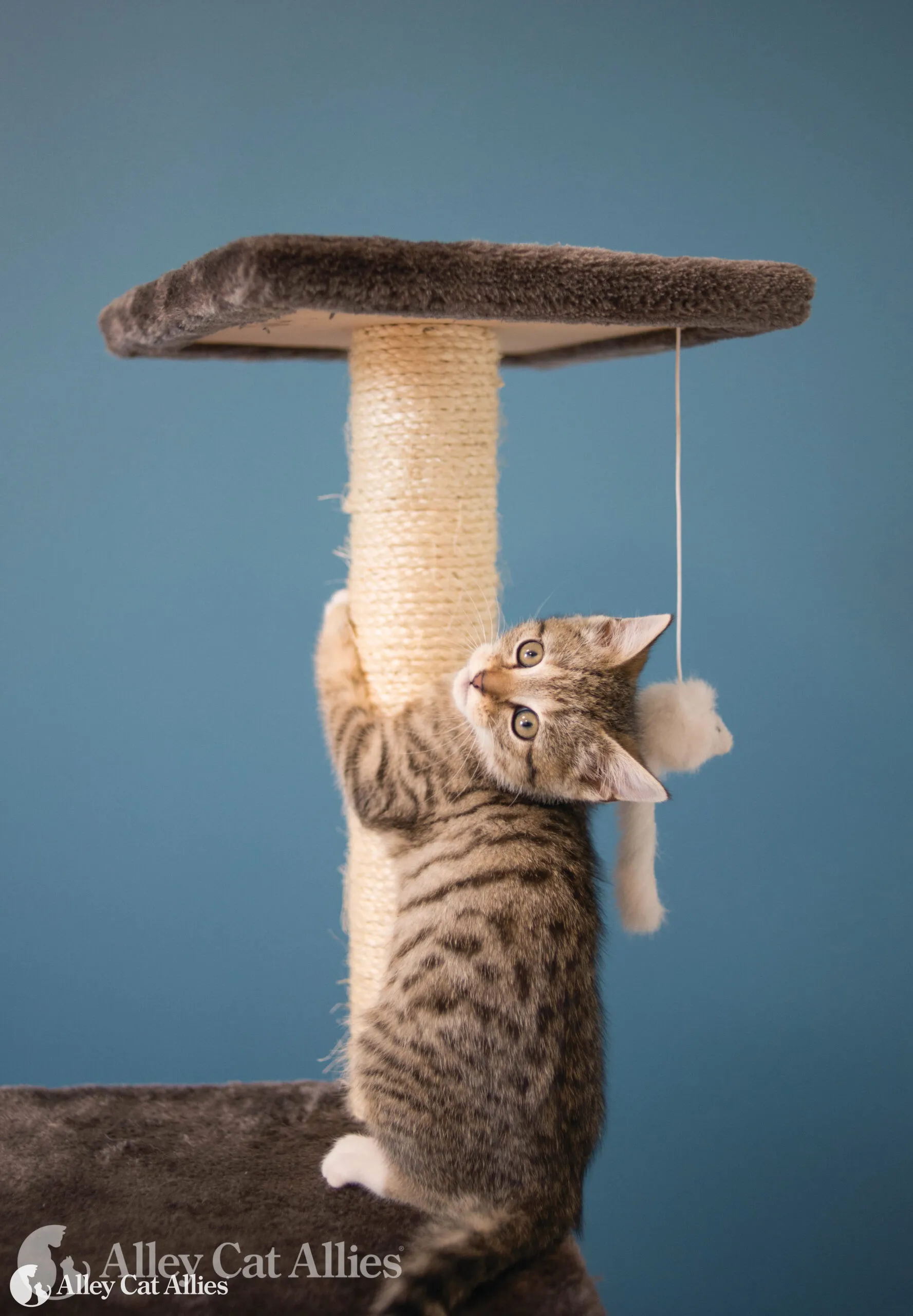Cat scratching behavior is a completely normal and essential part of feline life. If you’re a cat owner frustrated by shredded furniture, rest assured that stopping this instinct entirely isn’t the goal—or even possible. Instead, focus on redirecting your cat’s scratching to appropriate spots. This approach keeps your home intact while respecting your pet’s natural needs. Whether you have a kitten or an adult cat, understanding cat scratching behavior helps build a harmonious household.
Cats scratch for several vital reasons: to shed old nail sheathes, mark territory with scent glands in their paws, stretch muscles, and exercise. With five claws on front paws and four on the back (more for polydactyl cats), their claws are key for climbing, hunting, and self-defense. It’s not spite—your couch isn’t the enemy. According to experts at Alley Cat Allies, a leading cat welfare organization, scratching fulfills innate instincts that support physical and emotional health.
Patience is crucial when redirecting this behavior. Experiment with options tailored to your cat’s preferences, and always provide alternatives before using deterrents. Sharing your life with a cat means embracing their wild side. Below, we’ll explore six effective strategies backed by feline behavior specialists.
 Tabby kitten playing on a scratching post
Tabby kitten playing on a scratching post
Why Cats Scratch and Common Misconceptions
Before diving into solutions, grasp the science. Cats’ claws retract naturally, but scratching extends them to remove flaky outer layers, preventing overgrowth that could cause pain or infection. Vertical scratches mimic tree trunks in the wild, while horizontal ones suit carpet-like surfaces. Indoor cats scratch more due to limited outlets for energy and territory marking.
A common myth? Cats scratch to “get back at you.” Vets from the American Animal Hospital Association (AAHA) confirm it’s purely instinctual, not punitive. Indoor enrichment reduces unwanted scratching by 70%, per studies. If your cat targets specific areas, observe patterns—near sleeping spots signals territory needs.
For multi-cat homes, competition amplifies scratching. Introduce resources gradually, like multiple posts, to ease tensions. Always prioritize positive reinforcement; punishment increases stress and worsens behavior.
1. Provide Scratching Posts and Furniture
The foundation of redirection: offer sturdy scratching posts where your cat already scratches, such as near the sofa or entryways. Sisal-wrapped posts mimic bark texture, attracting felines naturally. Place vertical posts (at least 3 feet tall) for full-body stretches and horizontal pads for lounging scratchers.
Enhance appeal with catnip spray or toys dangling from posts. In my experience fostering rescue cats, positioning posts in high-traffic areas like living rooms led to 80% less furniture damage within weeks. Experiment with freestanding towers or wall-mounted options for variety.
2. Offer Diverse Scratching Textures and Surfaces
One-size-fits-all fails with cats. Stock up on sisal rope, corrugated cardboard scratchers, carpet remnants, and natural wood pads. Vertical posts suit climbers, slanted ramps appeal to relaxed scratchers, and flat boards work for horizontal preferences.
Rotate options monthly to prevent boredom. Brands like PetFusion or Yeowww! offer durable, non-toxic choices. Related to training, teaching easy tricks to teach your cat can pair with new scratchers, channeling energy positively.
3. Use Humane Deterrents Strategically
Protect forbidden zones with sticky tape, aluminum foil, or plastic mats—cats hate the texture. Citrus or menthol sprays (diluted essential oils) repel without harm. Motion-activated air puffers startle gently from afar.
Key rule: Pair deterrents with approved scratching spots nearby. The goal is redirection, not suppression. Avoid water sprays or noise devices that cause fear. Veterinary behaviorists recommend these for 90% success when combined with positives.
4. Trim Claws Regularly for Less Damage
Routine trims reduce shredding power. Use sharp guillotine-style clippers to cut just the tip, avoiding the quick (pink vein). Trim every 10-14 days, rewarding with treats. Start young for tolerance; for adults, wrap in a towel if needed.
Soft claw covers (nail caps) add fun—available in colors, they last 4-6 weeks. Apply with pet-safe glue during calm moments. If stress is high, skip them.
5. Boost Playtime and Toys to Burn Energy
Boredom fuels scratching. Dedicate 15-20 minutes daily to interactive play with wand toys, laser pointers, or balls. This outlets pent-up energy, mimicking hunt-scratch cycles. Puzzle feeders and tunnels keep idle paws busy.
Incorporate training sessions, like how to train your kitten tricks, to build mental stimulation. Rescue cats I’ve cared for scratched far less after adopting a “hunt twice daily” routine.
6. Steer Clear of Declawing—It’s Harmful
Never declaw. This barbaric surgery amputates toe bones, akin to chopping human fingertips. It causes chronic pain, arthritis, litter box avoidance, and biting aggression, per the Humane Society. Legal bans are growing worldwide for good reason.
Opt for the above humane methods instead. Persistent issues? Consult a certified cat behaviorist via the International Association of Animal Behavior Consultants (IAABC).
Final Thoughts on Cat Scratching Management
Redirecting cat scratching behavior strengthens your bond and preserves your belongings. Start with posts and play, layer in deterrents and trims, and monitor progress. Every cat is unique—persistence pays off.
Consult your vet for underlying issues like anxiety or pain. For more tips, explore can you train cats to stay off counters. Your feline family member deserves a scratching solution that honors their nature.
References
- Alley Cat Allies: Cat Behavior: Scratching
- Humane Society: Declawing Risks
- American Animal Hospital Association (AAHA): Feline Behavior Guidelines
- International Association of Animal Behavior Consultants (IAABC)
